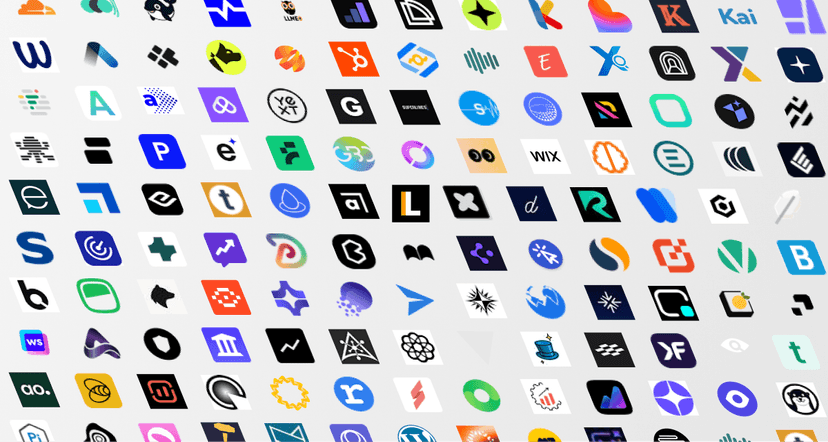how to optimize for ai overviews, AI Overviews, Generative AI SEO, SGE Optimization, Content Strategy
How to Optimize for AI Overviews and Win Search
Written by LLMrefs Team • Last updated August 17, 2025
To get your content featured in AI Overviews, you need to think a little differently. It's about creating content that's not just good, but exceptionally clear, authoritative, and structured in a way that an AI can easily understand and trust. It all boils down to solid SEO fundamentals, a heavy emphasis on E-E-A-T (Experience, Expertise, Authoritativeness, Trustworthiness), and formatting that’s a breeze for both people and algorithms to digest.
Understanding The New AI-Powered Search Landscape

Let's face it, the search game has changed. We're moving away from the classic "ten blue links." Now, Google often slaps a single, AI-generated summary right at the top of the page. This is the AI Overview, and it pulls information from several high-ranking sources to give users a direct answer on the spot.
This is a huge deal for SEOs. On one hand, it can increase "zero-click searches," since people might get their answer and leave. But on the other hand, it opens up a brand-new, premium spot for your content to be cited. Getting featured in an AI Overview instantly positions you as a go-to authority, building brand trust even if you don't get the click.
The Strategic Shift From Links To Citations
Our goal is evolving. It's not just about ranking anymore; it's about being cited. This is a small but crucial shift in thinking. The AI models behind these overviews are designed to hunt down the most direct, clear, and trustworthy information they can find. Your job is to structure your content to be that source.
Here’s what you need to keep in mind for this new reality:
- Clarity Over Complexity: The AI prefers straightforward, declarative sentences. Forget the dense, academic jargon; think simple and direct. For example, instead of "The utilization of cryptographic protocols is imperative for securing digital transmissions," say "Use encryption to protect data transfers."
- Authority Signals are Crucial: Your expertise needs to be obvious. Things like detailed author bios, original research, and citing credible sources have never been more important.
- Structured Content Wins: Lists, tables, and short, concise summaries are formats that AI models can easily parse and pull into an overview. A simple bulleted list is often more valuable than a long paragraph.
The real secret to optimizing for AI Overviews is to become the most helpful, clear, and credible source on your topic. You're writing for a human reader, but you're also creating content for a very literal-minded AI assistant.
Fully embracing this means understanding how to use AI for SEO in a much broader sense. The old playbook still has value, but it needs some serious updates.
Traditional SEO vs AI Overview Optimization
To really see the difference, it helps to compare the old approach with the new one side-by-side. The core principles of SEO remain, but the application and emphasis have shifted significantly.
| Focus Area | Traditional SEO Approach | AI Overview Optimization Approach |
|---|---|---|
| Content Goal | Attract clicks by ranking high and having a compelling title. | Get cited directly within the AI-generated answer. |
| Language | Often uses keyword-dense language and marketing copy. | Prioritizes simple, factual, and direct conversational language. |
| Formatting | Focus on long-form content, sometimes with dense paragraphs. | Emphasizes scannable formats like lists, tables, and short paragraphs. |
| Expertise | E-E-A-T signals help with overall domain authority. | Explicit E-E-A-T signals are critical for being chosen as a source. |
As you can see, the game is now about providing explicit, easily digestible information. While a high ranking is still the price of entry, the ultimate prize is becoming the direct source for the AI's answer.
Writing Content That AI Overviews Actually Use
If you want your content to show up in AI Overviews, you have to think like the AI. These models are designed to find the most direct, authoritative, and clearly presented answers. Your job is to structure your content so it's incredibly easy for these systems to digest and feature. That means simple language, scannable formats, and a logical flow are non-negotiable.
The main idea is to make your information as easy to parse as possible. Think about explaining a complex topic to someone in a hurry—you’d get straight to the point. That's precisely how AI models look for information, which is why straightforward, declarative sentences consistently win out over dense, jargon-filled paragraphs.
This simple graphic breaks down the process of aligning your content with how AI-driven search works.
As you can see, it all starts with understanding what the user actually needs and then creating content specifically primed for the AI to pick up.
Adopt The Answer-First Model
One of the most powerful tactics I’ve seen work time and again is the answer-first content model. Instead of building suspense and revealing the conclusion at the end, give the direct answer right at the top of a section. The rest of the paragraphs can then be used to add detail, context, and nuance. This approach perfectly mirrors how AI Overviews assemble their own responses.
For instance, if your heading is "What Is E-E-A-T in SEO?" your very first sentence should define it.
E-E-A-T stands for Experience, Expertise, Authoritativeness, and Trustworthiness. These are the guidelines Google uses to assess the quality of your content and your credibility as a source.
Once you’ve nailed that concise answer, then you can break down each component, explain why it matters, and give some real-world examples. By front-loading the key information, you make your content a perfect, ready-to-use source for an AI. This is a cornerstone of AI search optimization, which is all about adapting your strategy for generative search engines. For a deeper dive, check out our guide on AI search optimization.
Structure Content For Scannability
AI Overviews love pulling information from highly structured and scannable content. Walls of text are a dead end for both human readers and AI crawlers. You have to break down your big ideas into lists, tables, and short, punchy paragraphs.
Let’s look at a quick before-and-after.
Before (Dense Paragraph): "To improve your site speed, you should first compress your images using a tool, then you need to minify your CSS and JavaScript files to reduce their size, and finally, you should leverage browser caching to store static assets on the user's device, which will make subsequent page loads much faster."
After (Optimized Numbered List):
- Compress Images: Use a tool like TinyPNG to shrink image file sizes without losing visual quality.
- Minify Code: Cut down the size of CSS and JavaScript files by stripping out unnecessary characters.
- Leverage Browser Caching: Set up your server to store static files in a visitor's browser for much faster repeat visits.
The second version isn't just easier for a person to read; it's formatted perfectly for an AI to grab and use as a step-by-step answer. For more strategies on this, A Practical Guide to Using AI for Content Creation offers some great insights. When you start thinking in terms of scannable "blocks" of information, you're building content that's practically designed for AI selection.
Building Authority and Trust Signals for AI
AI Overviews are programmed to find the most credible answers, not just any answer. If you want your content to be the one Google’s AI picks, you need to prove you're a trustworthy source. This goes way beyond standard SEO; it's about building a deliberate strategy to showcase your authority.
This means you can't just claim to be an expert—you have to actively demonstrate it. AI models are on the lookout for tangible signals of credibility. Things like detailed author bios, citations to reputable sources, and transparent company information are no longer optional. Think of it as building a digital resume for your website that proves you know your stuff.

Showcase Your Human Expertise
One of the most powerful signals you can send is that real, qualified people are behind your content. Vague author bylines like "Admin" or "Company Staff" are immediate red flags for both human readers and AI. You need to put a spotlight on the people creating your content and their credentials.
Start by creating detailed author bios for every single writer. And I don't mean just their name. It should be a concise summary of why they're qualified to write on the topic.
- Relevant Experience: Instead of "John is a writer," try "John Smith is a Certified Financial Planner (CFP) with 15 years of experience in wealth management."
- Credentials and Education: Highlight degrees, certifications, or awards directly related to your niche. Example: "Jane Doe holds a Ph.D. in Computer Science from MIT."
- Professional Profiles: Link out to their LinkedIn, X (formerly Twitter), or a personal portfolio site.
This information shouldn't be buried on a separate "Our Team" page. Put a short, impactful bio right on each article page. Making that explicit connection between the content and a qualified expert is a huge trust signal for AI. Our guide on AI search engine optimization explains how these signals fit into a bigger strategy.
Make Your Organization Transparent
Just as you showcase your authors, you have to establish your organization's credibility. An AI is much more likely to trust a well-defined entity than an anonymous website. A comprehensive "About Us" page is your starting point.
This page needs to clearly state your mission, your history, and the expertise of your leadership team. It helps Google understand who you are and why you're a reliable source in your field.
A well-crafted 'About Us' page isn't just for users; it's a foundational document that tells search engines who you are, what you stand for, and why your content should be trusted.
On top of that, implementing Organization schema markup is a smart technical move. This structured data explicitly tells Google your business name, logo, and contact info, reinforcing your identity. For example, add code to your homepage header that defines your legal name, website, and social media profiles for the AI to easily parse.
Back Up Claims with Data and Outbound Links
Truly authoritative content is built on a foundation of evidence. Anytime you make a factual claim, you need to back it up with a link to a credible, primary source. Citing original research, academic studies, or established industry reports shows your content is meticulously researched, not just opinion.
This practice also positions you within a larger conversation among experts, signaling to AI that you are a relevant part of that community. For instance, the rapid adoption of AI in business highlights the demand for data-backed content. In a recent global survey, a staggering 78% of organizations reported using AI in at least one business function, with many deploying it across an average of three areas. You can discover more about these AI adoption trends on mcksinsey.com.
Weaving in timely, sourced statistics like that doesn't just add value for the reader—it significantly strengthens your content’s authority in the eyes of an AI.
Essential Technical SEO for AI Visibility
https://www.youtube.com/embed/yOILgTpXftc
Even the most amazing content won't get noticed by AI if it's buried under a mountain of technical issues. Think of it this way: AI crawlers, just like their traditional counterparts, need a clear path to find, access, and understand your site. If your technical foundation is shaky, you’re essentially invisible.
Your starting point is a clean, logical site architecture. You want to create a straightforward map for the AI. It should be able to get from your homepage to a specific article in just a couple of clicks, following an intuitive path through categories. For example, a good path would be Homepage > Blog > SEO > How to Optimize for AI Overviews, not a messy URL with random numbers and no clear hierarchy.
Make Your Site Blazing Fast and Mobile-Ready
Page speed and a solid mobile experience aren't just "nice-to-haves" anymore; they're absolute table stakes for AI visibility. AI models prioritize sources that give users a smooth, fast experience. A slow, clunky website is a major turn-off.
Put yourself in the AI's shoes. If it hits your page and has to wait five seconds for it to load, that’s an inefficient use of its resources. It’s far more likely to just move on to a faster competitor. Your site needs to be snappy on every device, but pay special attention to mobile, since that’s where most searches originate today.
The cost of running these massive AI systems has dropped dramatically—inference costs for models like GPT-3.5 fell by more than 280 times in just two years. This incredible efficiency means it's cheaper than ever for search engines to run advanced AI at a global scale. They are not going to squander those savings crawling slow, poorly optimized websites. If you're interested in the data behind this, I highly recommend you read the full AI Index Report 2024.
Use Schema Markup to Speak the AI’s Language
This is your secret weapon. Schema markup is a bit of code you add to your site that gives AI explicit context about your content. It’s like putting little labels on your information so the AI knows precisely what it's looking at, removing any guesswork.
For getting into AI Overviews, a couple of schema types are incredibly effective:
- FAQPage Schema: Got a Q&A section on your "service" page? Marking up each question and its direct answer tells the AI, "Here is a specific query and its corresponding solution," making it a perfect snippet to pull.
- HowTo Schema: If you're writing a step-by-step guide on "how to repot a plant,"
HowToschema breaks down each step into a clear sequence. The AI can then lift that entire process and present it as a neat, numbered list in an overview.
Here’s a simple JSON-LD example of what HowTo schema looks like in practice:
{
"@context": "https://schema.org",
"@type": "HowTo",
"name": "How to Brew the Perfect Cup of Coffee",
"step": [
{
"@type": "HowToStep",
"text": "Grind your coffee beans."
},
{
"@type": "HowToStep",
"text": "Boil water to the ideal temperature."
},
{
"@type": "HowToStep",
"text": "Pour water over the grounds and let it bloom."
}
]
}
By adding the right schema, you’re basically translating your content into the native language of search AI. You're removing ambiguity and signaling exactly what your information is for, which can dramatically boost your chances of getting featured.
Measuring and Refining Your AI Overview Strategy

Optimizing for AI Overviews isn’t a one-time project you can check off your list. It's a continuous cycle of testing, measuring, and tweaking. After you've pushed your updated content live, you have to know what's actually working. This means making AI citations a core metric in your SEO reporting.
The most straightforward way to start is by simply checking if your domain is getting cited. You can do this the old-fashioned way—searching for your target keywords in an incognito browser. For a more scalable solution, though, specialized tools are popping up that can track your brand's mentions across various AI models.
Digging into Your Performance Data
Beyond just looking for citations, your Google Search Console (GSC) account is an absolute goldmine. Zero in on the queries you know are triggering AI Overviews. What you're looking for are any significant shifts in click-through rates (CTR) and impressions for those keywords.
If you see a drop in CTR for a page that’s ranking at the top, it could mean the AI Overview is answering the user's question right there on the results page. This isn't always a disaster, especially if your brand is the one being cited, but it's a critical piece of the puzzle.
Here's a practical, actionable way to analyze this in GSC:
- Filter by Query: Isolate the specific keywords you've been optimizing (e.g., "how to fix a leaky faucet").
- Compare Date Ranges: Set the date range to compare the 30 days before your changes went live with the 30 days after.
- Analyze CTR vs. Impressions: If impressions for your page are climbing but CTR is flat or dropping, it’s a strong signal the AI Overview is getting all the attention. This makes your citation within it incredibly valuable.
To really get a handle on the impact, you need to be tracking the right things. Building out a proper SEO performance dashboard helps you visualize your progress and spot where you need to improve, connecting the dots between your content changes and real-world results.
Creating a Feedback Loop for Improvement
All the data you pull from GSC and citation trackers should feed directly back into your strategy. This is your feedback loop. Use these insights to figure out which content formats and structures are winning you citations.
Was it the article with the sharp, concise summary table? Or maybe the one with the clean, step-by-step numbered list? For example, if you notice your page on "best running shoes for flat feet" gets cited after you added a comparison table, that's a signal. Your action item is to identify other comparison-style articles on your site and add similar tables.
By spotting these patterns, you can build your own internal playbook for what works. This lets you take the successful ingredients from one piece of content and apply them across your entire site, systematically boosting your odds of getting featured.
This constant process of analysis and refinement is what will keep you ahead. AI models are always changing, and so are the signals they use to pick their sources. Staying visible means staying vigilant, and that means always measuring and adapting.
AI Overviews: Your Questions Answered
Diving into AI Overviews can feel a bit like navigating uncharted territory. Let's tackle some of the most common questions I hear from people trying to get their content featured.
What’s the Single Most Important Thing I Can Do?
If you only do one thing, focus on this: create ridiculously clear, direct, and well-structured content. Forget everything you think you know about stuffing keywords or writing long, winding prose.
AI models are built for efficiency. They want the fastest, most credible path to an answer. Your job is to give it to them on a silver platter. Put the answer right at the top of the relevant section, make it concise, and state it with authority. For example, if the H2 is "How often should you water a cactus?" the very first sentence should be "Water a cactus once every 2-4 weeks during its growing season and less frequently in the winter."
Your goal is to be the most citable source on the page. Break your content into distinct, answer-first blocks that an AI can easily grab and reference. This strategy mirrors exactly how these generative models work.
Will This Mess Up My Regular Google Rankings?
Absolutely not. In fact, it should do the opposite. Optimizing for AI Overviews is really just practicing a more disciplined and modern form of SEO.
Think about it. The core principles—doubling down on E-E-A-T, creating genuinely helpful content, improving the user experience, and locking down your technical SEO—are all things that have always been rewarded by Google.
For instance, when you take a dense block of text and convert it into a scannable bulleted list, you’re not just making it easier for an AI to cite. You're also making it way better for a human reader, which can lead to lower bounce rates and more time spent on your page. These are classic positive signals for traditional search rankings. See it as an evolution of your SEO strategy, not a separate, conflicting one.
How Long Until I See My Content in an AI Overview?
This is the classic "it depends" answer, but with a twist. Unlike the slow grind of traditional SEO, where you might wait months for a page to climb the rankings, getting into an AI Overview can happen surprisingly fast if you’ve laid the groundwork.
If you're updating a page that already ranks on page one for your target query, you could see it cited in a matter of days or weeks. For brand-new content or pages buried on page five, it’s going to take longer because you first need to build up those foundational ranking signals. Patience and persistence are your best friends here. Keep refining your work and monitoring the results.
Ready to stop guessing and start measuring your AI Overview performance? LLMrefs gives you the data you need to see exactly when and where your brand is being cited in AI-generated answers. Track your visibility, analyze competitors, and build a winning Generative Engine Optimization strategy. Start monitoring your AI presence today by visiting https://llmrefs.com.
Related Posts

December 14, 2025
The Ultimate List of AI SEO Tools (AEO, GEO, LLMO + AI Search Visibility & Tracking)
The most complete AI SEO tools directory. 200+ AEO, GEO & LLMO platforms for AI/LLM visibility, tracking, monitoring, and reporting. Updated Dec 2025.

December 13, 2025
How ChatGPT memory works, reverse engineered
Reverse engineering ChatGPT Memories reveals it does not use RAG or vector databases. It uses: metadata, facts, conversation summaries, and a sliding window.

December 10, 2025
33 key terms you need to know for AI SEO in 2025
Comprehensive glossary of 33 essential terms for AI SEO in 2025. From GEO and AEO to citations and fan-out queries, learn the vocabulary that defines modern search optimization.

December 8, 2025
AI assistants are not search engines
We analyzed 4.5M ChatGPT conversations. Two thirds have zero commercial intent. People use AI to think, not to shop. Here is what that means for your content strategy.